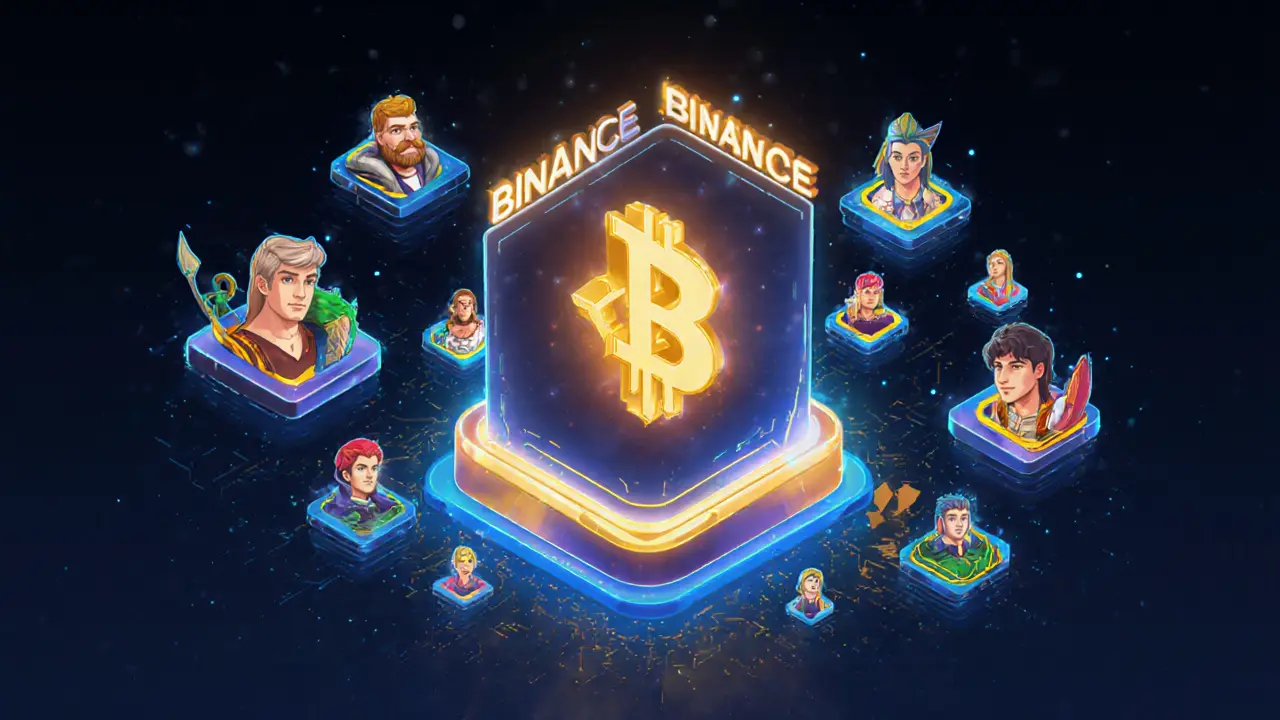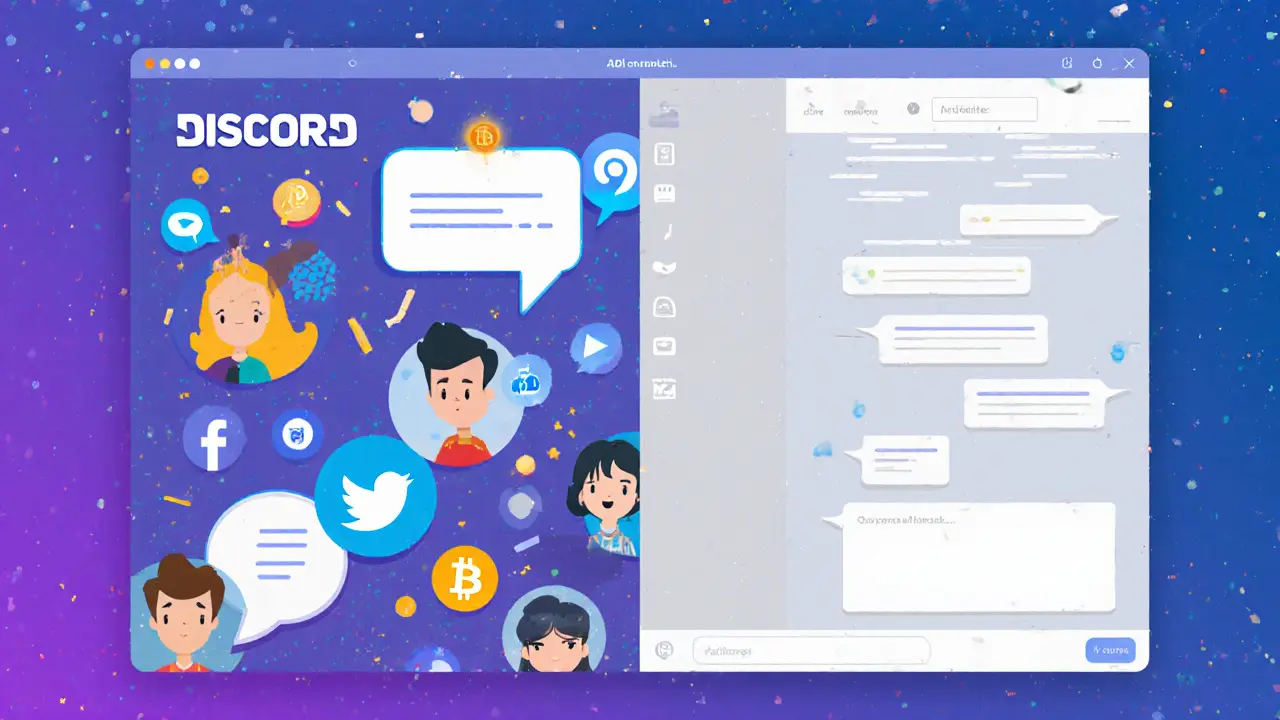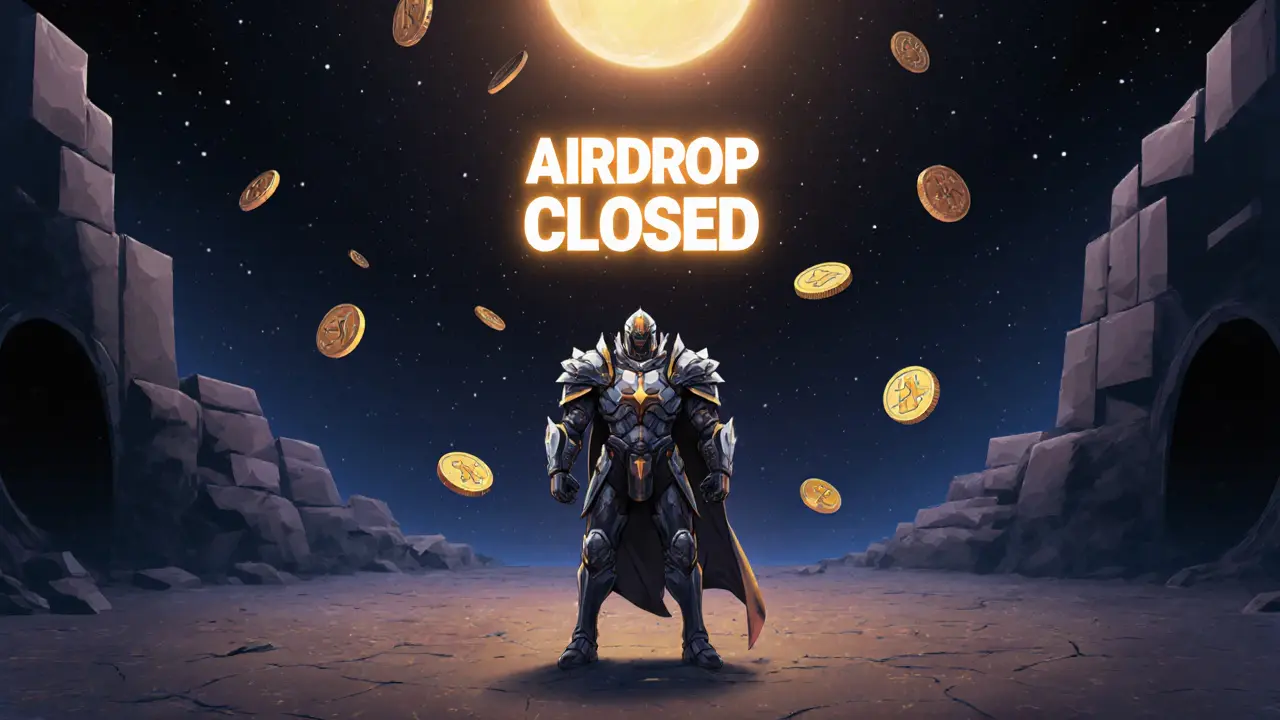Nov 10, 2025, Posted by: Ronan Caverly

Airdrop Legitimacy Checker
Airdrop Legitimacy Assessment
Evaluate potential airdrop opportunities using criteria from the RUNE.GAME case study. Avoid scams and wasted time on expired or fraudulent campaigns.
Airdrop Legitimacy Score
0%Enter information to see legitimacy assessment.
Red flags detected:
Recommendation will appear here...
Back in 2021, if you were into blockchain games, you probably saw the hype around RUNE.GAME. It wasn’t just another crypto project-it was one of the early play-to-earn MMOs promising real NFT rewards just for playing. And the biggest push? A $70,000 airdrop with CoinMarketCap. But here’s the thing: that airdrop is long over. If you’re looking to claim RUNE tokens or NFTs now, you’re too late. And that’s okay. Understanding what happened helps you spot real opportunities next time.
What Was the RUNE.GAME Airdrop?
The RUNE.GAME x CoinMarketCap airdrop launched in mid-2021 as a joint effort to grow the player base of a new blockchain-based MMO. The goal was simple: reward early adopters with NFTs that could be used inside the game. A total of 1,000 winners were selected, each getting up to 1 unique RUNE NFT. These weren’t just digital collectibles-they were in-game heroes with stats, abilities, and ownership recorded on the Binance Smart Chain (BSC).The total prize pool was $70,000, meaning each winner got roughly $70 worth of value. But it wasn’t cash. It was in-game assets. That’s important. You didn’t get RUNE tokens you could trade on exchanges-you got NFTs that only worked inside RUNE.GAME’s ecosystem. And if the game didn’t take off? Those NFTs lost value fast.
How to Qualify for the Airdrop (Back When It Was Active)
To enter, you had to complete a checklist of social and platform tasks. It wasn’t just signing up. You had to prove you were active in crypto communities. Here’s what you needed to do:- Add RUNE (RUNE) to your CoinMarketCap watchlist
- Follow @RuneMMO on Twitter
- Like and retweet the official airdrop tweet
- Tag at least three friends in the tweet using hashtags: #BSC, #BSCgems, #playtoearn, #Binance
- Join the official Rune Telegram group
- Join the Rune Discord server
- Subscribe to their newsletter
- (Optional) Visit rune.game and check out the game
Each step was designed to spread the word. Tagging friends meant organic growth. Joining Telegram and Discord built community. Following CoinMarketCap gave the project credibility. This wasn’t a lazy airdrop. It was a marketing machine.
Why Binance Smart Chain?
RUNE.GAME chose Binance Smart Chain (BSC) for one reason: cost. Ethereum was expensive. Gas fees for buying or trading NFTs could hit $50 or more. On BSC, the same transaction cost less than $0.10. That made sense for a game where players might buy multiple heroes, upgrade gear, or trade items daily.It also meant the NFTs were compatible with wallets like MetaMask and Trust Wallet-tools most crypto users already had. No need to learn new tech. Just connect your wallet, claim your NFT, and start playing.

Why Did It Shut Down?
The airdrop ended on September 8, 2021. That’s not a typo. It’s been over three years. And if you visit rune.game today, you’ll see a message: “It looks like you are too late. The airdrop is closed.”Why? Because most crypto airdrops are time-limited. They’re not meant to run forever. They’re spikes-designed to create buzz, attract users, and lock in early adopters. After September 2021, RUNE.GAME shifted focus to gameplay and retention. But here’s the problem: the game never caught on like Axie Infinity or other top play-to-earn titles.
By 2022, the crypto winter hit. NFT markets crashed. Many blockchain games lost players. RUNE.GAME didn’t disappear, but it faded. No major updates. No new NFT drops. No airdrops since. The community went quiet. The Twitter account still exists, but posts are rare. The Discord server? Mostly empty.
What Happened to the NFTs?
If you won one of those 1,000 NFTs, you still own it-on the BSC blockchain. But owning something doesn’t mean it’s valuable. Without an active game economy, those NFTs can’t be used. No marketplace. No trading. No upgrades. They’re digital trophies sitting in your wallet.Some collectors might still trade them on NFT marketplaces like OpenSea or PancakeSwap, but prices are near zero. A few listings show 0.0001 BNB-less than a penny. That’s what happens when a project loses momentum.

Lessons from the RUNE.GAME Airdrop
This isn’t just a story about a closed campaign. It’s a case study in how most crypto airdrops work-and why they often fail.- Airdrops aren’t free money. They’re marketing tools. You give away value to get attention. If the product doesn’t deliver, the hype dies.
- Community matters more than tokens. RUNE.GAME built Telegram and Discord groups-but didn’t keep them alive. No updates. No engagement. Players left.
- Don’t chase past airdrops. If it’s closed, it’s closed. No amount of searching will bring it back. Focus on active projects with real teams and transparent roadmaps.
- Check the blockchain. If a game uses BSC or Polygon, it’s likely built for low-cost gameplay. Ethereum-based games are rarer and more expensive to run.
What Should You Do Now?
Don’t waste time trying to claim something that’s gone. Instead, use this as a template for future airdrops:- Look for projects with active development-check GitHub, Twitter, and Discord for regular updates.
- See if the team has a public roadmap. Are they building? Or just waiting for the next bull run?
- Join their community. If the Discord is dead, walk away.
- Read the terms. Are you getting tokens? NFTs? In-game items? Know what you’re getting before you spend time.
- Never pay to join an airdrop. Legit ones never ask for money or private keys.
The RUNE.GAME airdrop was real. It paid out. But it didn’t last. And that’s normal. Most crypto games don’t. The ones that do? They’re the ones that keep building-even when the hype fades.
Was the RUNE.GAME airdrop real?
Yes, the RUNE.GAME x CoinMarketCap airdrop was real and ran from early to mid-2021. It awarded 1,000 winners with RUNE NFTs worth a total of $70,000. Winners were selected based on completing social media tasks. The airdrop was officially closed on September 8, 2021.
Can I still claim RUNE.GAME NFTs or tokens?
No. The airdrop is permanently closed. The official website and CoinMarketCap campaign pages now show a message that the airdrop has ended. There is no way to join or claim rewards now. Any website or person claiming otherwise is likely a scam.
Did RUNE.GAME use Ethereum or Binance Smart Chain?
RUNE.GAME used Binance Smart Chain (BSC). This was chosen because it offered much lower transaction fees than Ethereum, making it practical for players to buy, sell, and upgrade NFTs during gameplay. The campaign also required participants to use hashtags like #BSC and #BSCgems.
What did winners actually receive?
Winners received up to one unique RUNE NFT, which represented a playable hero character in the game. These NFTs were stored on the BSC blockchain and could be viewed in compatible wallets like MetaMask. They were not tokens you could trade on exchanges-they were in-game assets with no value outside RUNE.GAME’s ecosystem.
Is RUNE.GAME still active today?
RUNE.GAME is not actively developed or promoted as of 2025. The official website still exists but shows no updates since 2022. Social media channels are mostly inactive. The game’s economy has collapsed, and the NFTs awarded during the airdrop have little to no value today. It’s considered a defunct project.
How can I avoid fake RUNE.GAME airdrops now?
Never give away your private keys or pay any fee to join an airdrop. Only trust official channels: @RuneMMO on Twitter, the official Telegram group (Rune_EN), and the website rune.game. If you see a new airdrop claiming to be RUNE.GAME, check the dates-any post after September 2021 is fake. Always verify through archived pages on the Wayback Machine.

Author
Ronan Caverly
I'm a blockchain analyst and market strategist bridging crypto and equities. I research protocols, decode tokenomics, and track exchange flows to spot risk and opportunity. I invest privately and advise fintech teams on go-to-market and compliance-aware growth. I also publish weekly insights to help retail and funds navigate digital asset cycles.